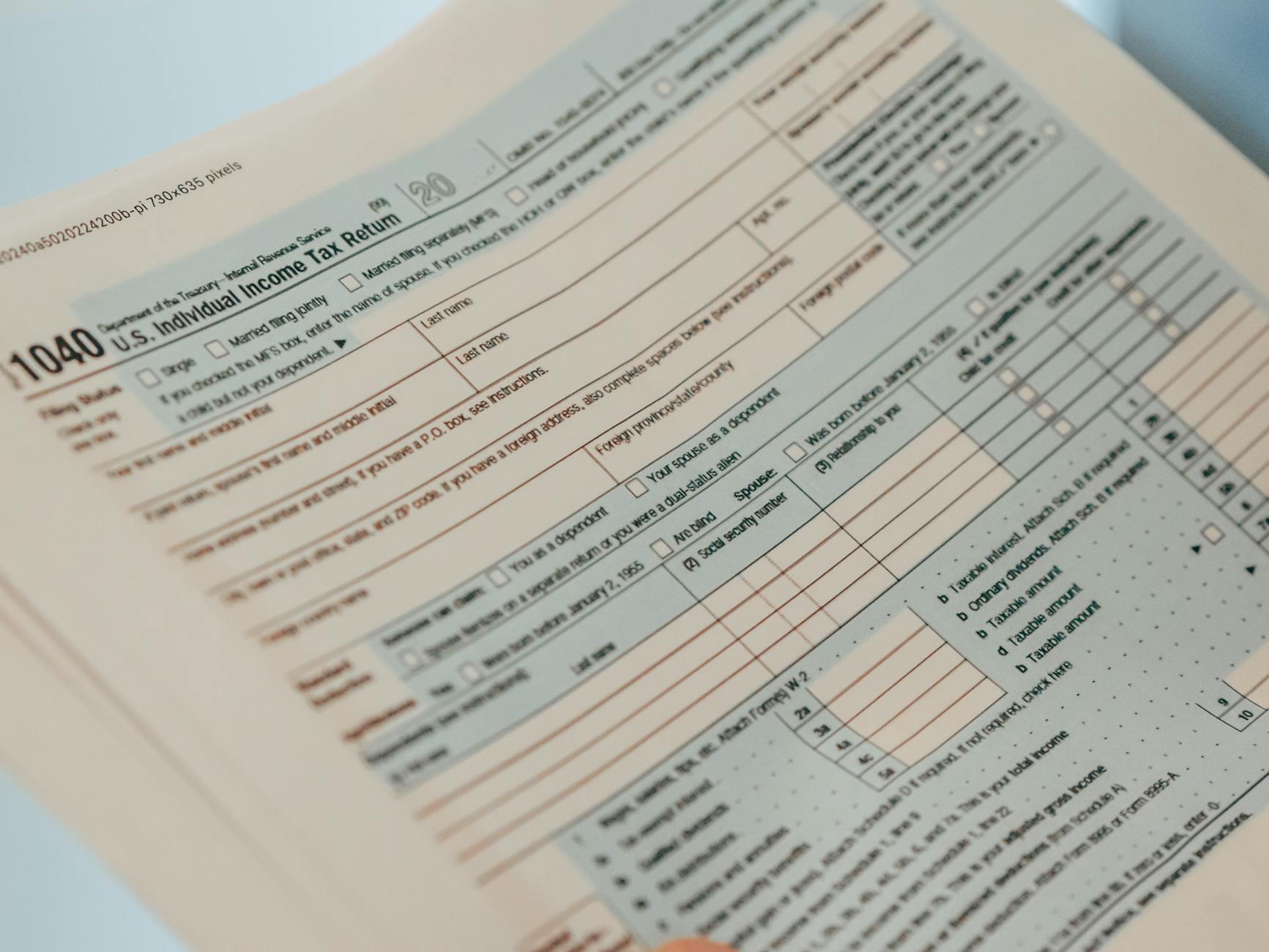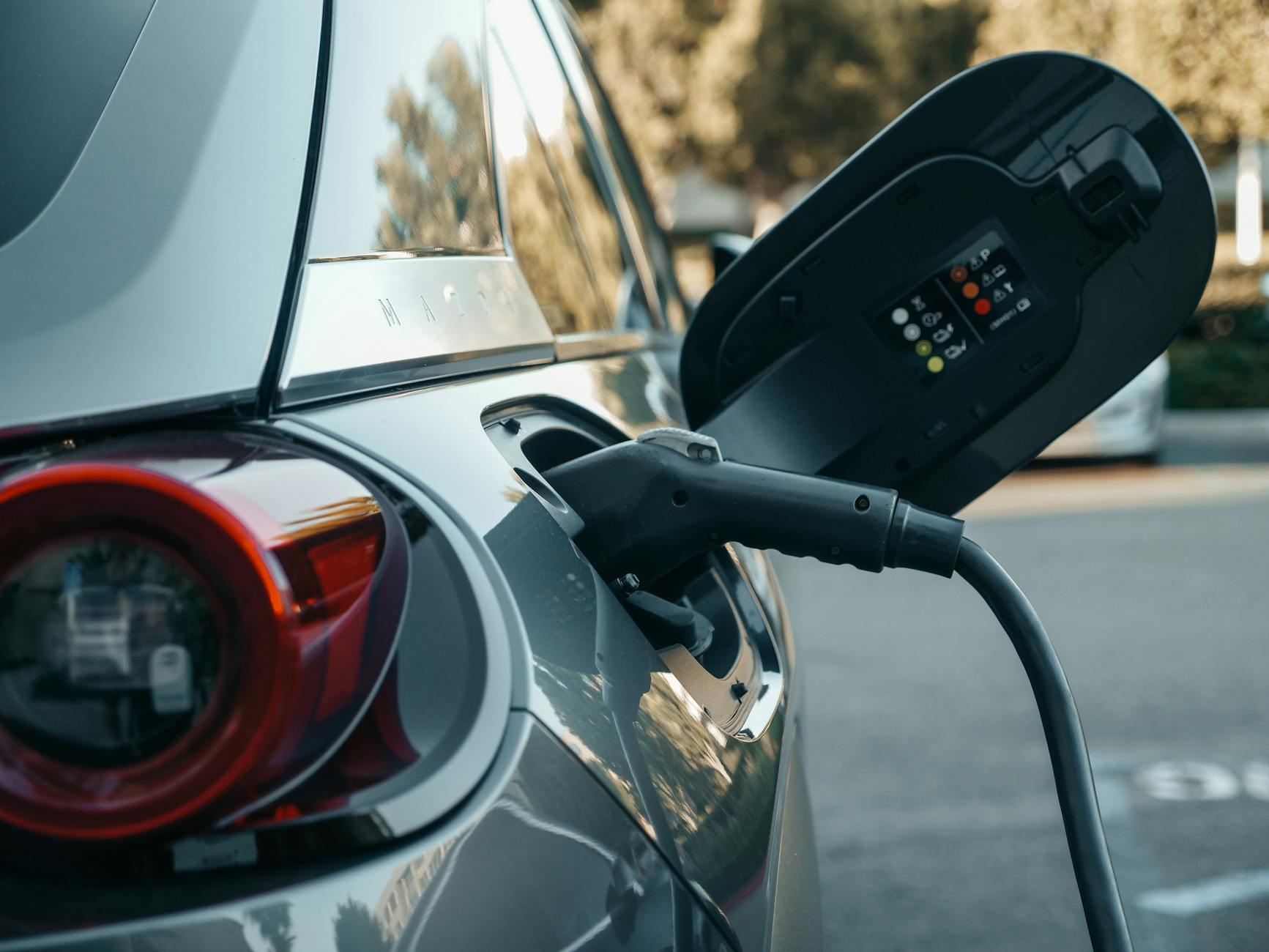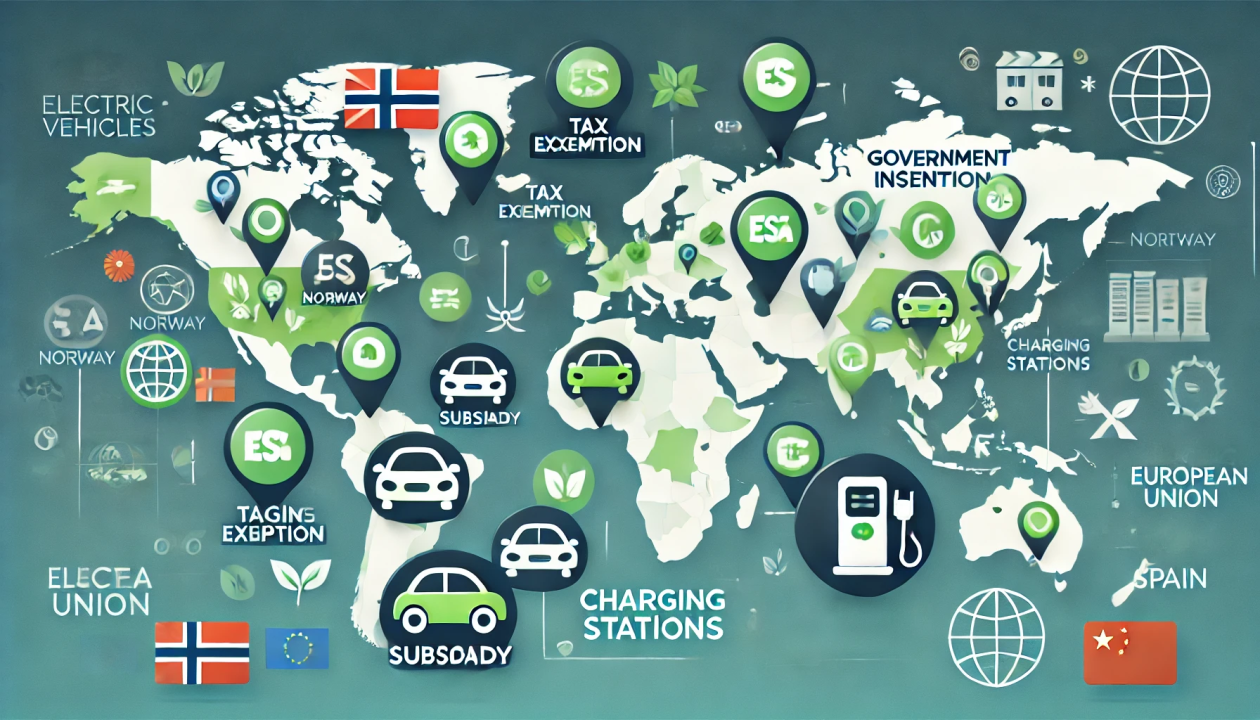Are you ready to supercharge your savings while saving the planet? 🌍⚡ The US government is rolling out an electrifying array of incentives for electric car buyers, and you won’t want to miss out on these shocking deals!
From jaw-dropping tax credits to state-specific perks, the road to electric vehicle ownership has never been smoother. But here’s the kicker: these incentives aren’t just about putting more EVs on the streets. They’re part of a larger push to revolutionize our transportation infrastructure and drive America towards a cleaner, greener future. 🚗💨
Curious about how much you could save? Buckle up as we take you on a high-voltage tour of the top electric car incentives from the US government. We’ll explore everything from federal tax credits and state-level bonuses to charging infrastructure support and fleet electrification programs. Plus, we’ll unveil some additional financial perks that might just shock you!
Overview of Federal Tax Credits

Eligibility criteria for electric vehicles
To qualify for federal tax credits, electric vehicles must meet specific criteria set by the U.S. government. These criteria ensure that the incentives support the adoption of genuinely eco-friendly and domestically produced vehicles. Here are the key eligibility requirements:
- Battery capacity: The vehicle must have a battery capacity of at least 7 kilowatt-hours (kWh).
- Gross vehicle weight rating (GVWR): The vehicle must have a GVWR of less than 14,000 pounds.
- Final assembly location: The vehicle must undergo final assembly in North America.
- Price caps: The manufacturer’s suggested retail price (MSRP) must not exceed:
- $80,000 for vans, sport utility vehicles (SUVs), and pickup trucks
- $55,000 for other vehicle types
Additionally, there are income limits for taxpayers claiming the credit:
| Filing Status | Income Limit |
|---|---|
| Single | $150,000 |
| Head of Household | $225,000 |
| Married Filing Jointly | $300,000 |
It’s important to note that these criteria may change over time, so potential buyers should always check the latest guidelines from the IRS or Department of Energy.
Maximum credit amount
The federal tax credit for eligible electric vehicles can provide significant savings for consumers. The maximum credit amount is determined by the vehicle’s battery capacity and other factors:
- Base amount: $2,500
- Additional credit: $417 for each kWh of battery capacity in excess of 5 kWh
The total credit is capped at $7,500 per vehicle. This means that most fully electric vehicles with large battery capacities will qualify for the full $7,500 credit, while plug-in hybrid electric vehicles (PHEVs) with smaller batteries may receive a reduced credit.
Here’s a breakdown of potential credit amounts based on battery capacity:
| Battery Capacity | Estimated Credit |
|---|---|
| 7-16 kWh | $3,751 – $7,500 |
| 17-40 kWh | $7,500 |
| 41+ kWh | $7,500 |
It’s worth noting that the credit is non-refundable, meaning it can only reduce your tax liability to zero. Any excess credit cannot be refunded or carried over to future tax years.
Phase-out schedule for manufacturers
The federal tax credit program includes a phase-out schedule to encourage manufacturers to scale up production and reduce costs over time. This schedule is based on the number of qualified vehicles sold by each manufacturer:
- Full credit available: Until the manufacturer sells 200,000 qualified vehicles
- Phase-out begins: In the second calendar quarter after the quarter in which the 200,000th vehicle is sold
- Reduced credit: 50% of the full credit for two quarters
- Further reduction: 25% of the full credit for two additional quarters
- Credit ends: No credit available after the fifth quarter of the phase-out period
For example, if a manufacturer sells its 200,000th qualified vehicle in March 2023, the phase-out would begin on October 1, 2023. The credit would then be reduced to 50% from October 2023 to March 2024, further reduced to 25% from April 2024 to September 2024, and eliminated entirely after September 2024.
It’s crucial for consumers to be aware of where their preferred manufacturers stand in this phase-out schedule, as it can significantly impact the available tax credit for their chosen vehicle.
State-Level Incentives

A. Tax rebates and credits
State-level tax rebates and credits play a crucial role in making electric vehicles (EVs) more affordable for consumers. These incentives vary widely across different states, with some offering substantial financial benefits to EV buyers. Here’s a breakdown of some notable state-level tax incentives:
| State | Rebate/Credit Amount | Eligible Vehicles |
|---|---|---|
| California | Up to $7,000 | New EVs and PHEVs |
| Colorado | Up to $5,000 | New EVs and PHEVs |
| New Jersey | Up to $5,000 | New EVs |
| New York | Up to $2,000 | New EVs and PHEVs |
| Oregon | Up to $2,500 | New EVs and PHEVs |
These incentives can significantly reduce the upfront cost of purchasing an electric vehicle, making them more competitive with traditional gasoline-powered cars.
B. HOV lane access
Many states offer electric vehicle owners the privilege of using High Occupancy Vehicle (HOV) lanes, regardless of the number of passengers in the car. This benefit can lead to:
- Reduced commute times
- Less traffic-related stress
- Increased productivity
States like California, Florida, and Virginia allow single-occupant EVs to use HOV lanes, providing a significant incentive for commuters to switch to electric vehicles.
C. Reduced registration fees
To further encourage EV adoption, several states have implemented reduced registration fees for electric vehicles. These savings can add up over time, making EV ownership more economical. Some examples include:
- Arizona: Reduced vehicle license tax for EVs
- Illinois: Discounted registration fees for electric vehicles
- Connecticut: Waived registration fees for the first three years of EV ownership
D. Parking benefits
Many states and municipalities offer parking-related perks to EV owners, which can include:
- Free parking in designated areas
- Reserved spots in prime locations
- Discounted parking rates in public garages
For example, Hawaii provides free parking for EVs in certain public lots, while Nevada offers free parking at meters in some cities.
These state-level incentives, when combined with federal tax credits, create a compelling case for consumers to consider electric vehicles. By reducing the total cost of ownership and providing additional perks, states are actively working to accelerate the transition to cleaner transportation options.
As we move forward, it’s important to consider how these incentives work in tandem with efforts to improve charging infrastructure, which is crucial for widespread EV adoption.
Charging Infrastructure Incentives

Home charger installation credits
The U.S. government recognizes the importance of convenient charging solutions for electric vehicle (EV) owners. To encourage the adoption of EVs, various incentives are available for home charger installations. These credits make it more affordable for homeowners to set up their personal charging stations, enhancing the overall EV ownership experience.
- Federal tax credit of up to 30% of the installation cost (max $1,000)
- State-level rebates ranging from $250 to $1,500 in select states
- Utility company incentives offering additional savings or free equipment
Here’s a breakdown of potential savings for a typical home charger installation:
| Expense | Average Cost | Potential Savings |
|---|---|---|
| Equipment | $500 – $700 | Up to $210 (30% federal credit) |
| Installation | $800 – $1,500 | Up to $450 (30% federal credit) |
| Electrical upgrades | $200 – $800 | Varies by state and utility |
Workplace charging station grants
To support EV adoption and provide charging options for employees, the government offers grants and incentives for businesses installing workplace charging stations. These programs aim to create a more comprehensive charging network and alleviate range anxiety for EV drivers.
- Federal tax credit of up to 30% of the installation cost (max $30,000 per location)
- State-level grants offering additional funding for businesses
- Utility company programs providing rebates or free charging equipment
Workplace charging stations offer several benefits:
- Attract and retain environmentally conscious employees
- Demonstrate corporate social responsibility
- Potentially earn LEED certification points
- Provide a valuable amenity for customers and visitors
Public charging network expansion support
The government is committed to expanding the public charging infrastructure to support the growing number of EVs on the road. Various initiatives and funding programs are in place to accelerate the deployment of public charging stations across the country.
- $7.5 billion allocated in the Infrastructure Investment and Jobs Act for EV charging
- State-level grants and partnerships with private companies
- Funding for charging stations along highway corridors and in rural areas
The expansion of public charging networks aims to address several key objectives:
- Reduce range anxiety for EV drivers
- Enable long-distance travel for electric vehicles
- Provide charging options for those without access to home charging
- Encourage EV adoption in underserved communities
As the charging infrastructure continues to grow, it becomes increasingly easier for consumers to consider electric vehicles as a viable option for their transportation needs. The government’s support for charging infrastructure incentives plays a crucial role in creating a more sustainable and electrified future for transportation in the United States.
Fleet Electrification Programs

Commercial vehicle incentives
As businesses and organizations look to reduce their carbon footprint and operational costs, the U.S. government has introduced several incentives to encourage the electrification of commercial vehicle fleets. These incentives aim to offset the higher upfront costs of electric vehicles (EVs) and make the transition more financially viable for companies of all sizes.
One of the most significant commercial vehicle incentives is the Clean Commercial Vehicle Credit, which offers up to $40,000 per vehicle for qualifying electric trucks and vans. This credit applies to vehicles weighing over 14,000 pounds, making it particularly attractive for logistics and delivery companies. For smaller commercial vehicles, the credit can still reach up to $7,500, aligning with the incentives available for personal EVs.
| Vehicle Weight | Maximum Credit |
|---|---|
| Under 14,000 lbs | Up to $7,500 |
| Over 14,000 lbs | Up to $40,000 |
Additionally, businesses can benefit from accelerated depreciation schedules for electric fleet vehicles, allowing for faster tax write-offs and improved cash flow. Some states also offer supplementary incentives, such as grants or rebates, to further sweeten the deal for businesses transitioning to electric fleets.
Government fleet transition support
The federal government is leading by example in the transition to electric vehicles by providing substantial support for the electrification of government fleets. This initiative not only reduces emissions from government operations but also stimulates the EV market and infrastructure development.
Key elements of government fleet transition support include:
- Funding allocations for EV purchases
- Technical assistance for fleet management
- Charging infrastructure installation at government facilities
- Training programs for maintenance and operation of EVs
The Biden Administration has set ambitious goals for the federal fleet, aiming to acquire 100% zero-emission light-duty vehicles by 2027 and 100% zero-emission vehicles for all new acquisitions by 2035. To achieve this, the government is leveraging its purchasing power and providing resources to help agencies make the switch.
School bus electrification grants
Recognizing the importance of protecting children’s health and reducing emissions in communities, the government has introduced specific grants for school bus electrification. The EPA’s Clean School Bus Program is at the forefront of this initiative, offering substantial funding to replace diesel school buses with electric alternatives.
The program provides the following benefits:
- Up to $375,000 per electric school bus
- Up to $20,000 per bus for charging infrastructure
- Priority funding for high-need school districts and tribal schools
This initiative not only helps school districts transition to cleaner transportation but also provides educational opportunities for students to learn about sustainable technologies. Moreover, electric school buses can serve as mobile power sources during emergencies, enhancing community resilience.
As we move forward, these fleet electrification programs demonstrate the government’s commitment to accelerating the adoption of electric vehicles across various sectors. By providing financial incentives, technical support, and targeted grants, these initiatives are paving the way for a cleaner, more sustainable transportation future. The next section will explore additional financial perks that make the switch to electric vehicles even more attractive for individuals and businesses alike.
Additional Financial Perks

Lower electricity rates for EV owners
Many utility companies across the United States offer special rate plans for electric vehicle (EV) owners, recognizing the unique energy consumption patterns associated with charging these vehicles. These plans often include:
- Time-of-Use (TOU) rates: Lower rates during off-peak hours, typically overnight
- EV-specific plans: Tailored rates designed exclusively for EV owners
- Whole-home discounts: Reduced electricity rates for the entire household
Here’s a comparison of typical rate structures:
| Rate Type | Peak Hours | Off-Peak Hours | EV Charging Benefit |
|---|---|---|---|
| Standard | $0.20/kWh | $0.20/kWh | None |
| TOU | $0.25/kWh | $0.10/kWh | 50% savings at night |
| EV-specific | $0.22/kWh | $0.08/kWh | 60% savings at night |
Insurance discounts
Insurance companies are increasingly offering discounts to EV owners, recognizing the advanced safety features and lower accident rates associated with electric vehicles. Some common discounts include:
- EV-specific policy discounts
- Low-mileage discounts (as EVs are often used for shorter trips)
- Green vehicle discounts
- Safety feature discounts (e.g., for advanced driver assistance systems)
Reduced toll fees
Many states and local authorities are implementing reduced toll fees or free passage for electric vehicles to encourage adoption. These incentives can significantly reduce commuting costs for EV owners. Some examples include:
- HOV lane access without passenger requirements
- Discounted or waived bridge and tunnel tolls
- Reduced parking fees in certain cities and at airports
Zero-emission vehicle (ZEV) rebates
In addition to federal tax credits, several states offer Zero-Emission Vehicle (ZEV) rebates to further incentivize the purchase of electric vehicles. These rebates can provide substantial savings on top of other incentives. Key features of ZEV rebates include:
- Direct cash rebates, often applied at the point of sale
- Varying amounts based on vehicle type and price
- Income-based eligibility in some states
- Limited-time offers that may change annually
Here’s a breakdown of ZEV rebates in select states:
| State | Rebate Amount | Income Restrictions |
|---|---|---|
| California | Up to $7,000 | Yes |
| New Jersey | Up to $5,000 | No |
| New York | Up to $2,000 | No |
| Massachusetts | Up to $2,500 | Yes |
These additional financial perks, combined with the primary incentives offered by federal and state governments, create a compelling case for EV adoption. As we’ve seen, the benefits extend beyond the initial purchase, offering ongoing savings throughout the vehicle’s lifetime. Next, we’ll explore how these incentives are shaping the future of transportation and their impact on the broader goal of reducing carbon emissions.

The US government’s commitment to promoting electric vehicles is evident through a comprehensive array of incentives. From federal tax credits to state-level benefits, charging infrastructure support, and fleet electrification programs, these initiatives make electric car ownership more accessible and appealing than ever. Additional financial perks, such as reduced electricity rates and insurance discounts, further sweeten the deal for eco-conscious consumers.
As the automotive landscape continues to evolve, now is an opportune time to consider making the switch to an electric vehicle. By taking advantage of these government incentives, you can not only reduce your carbon footprint but also enjoy significant cost savings in the long run. Explore the available options in your state and discover how you can contribute to a cleaner, more sustainable future while reaping the benefits of electric car ownership.
